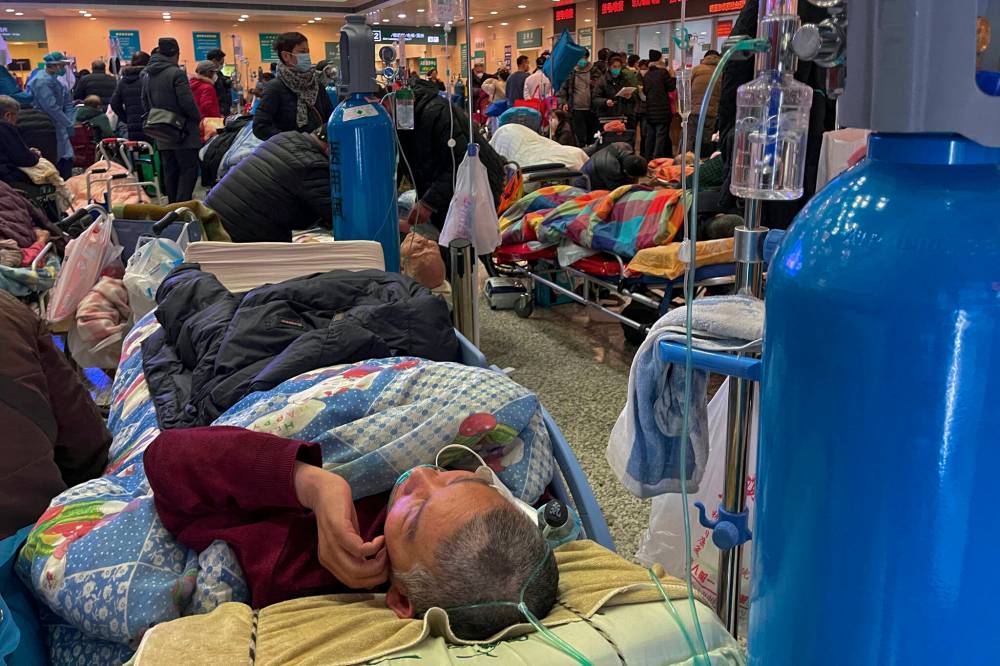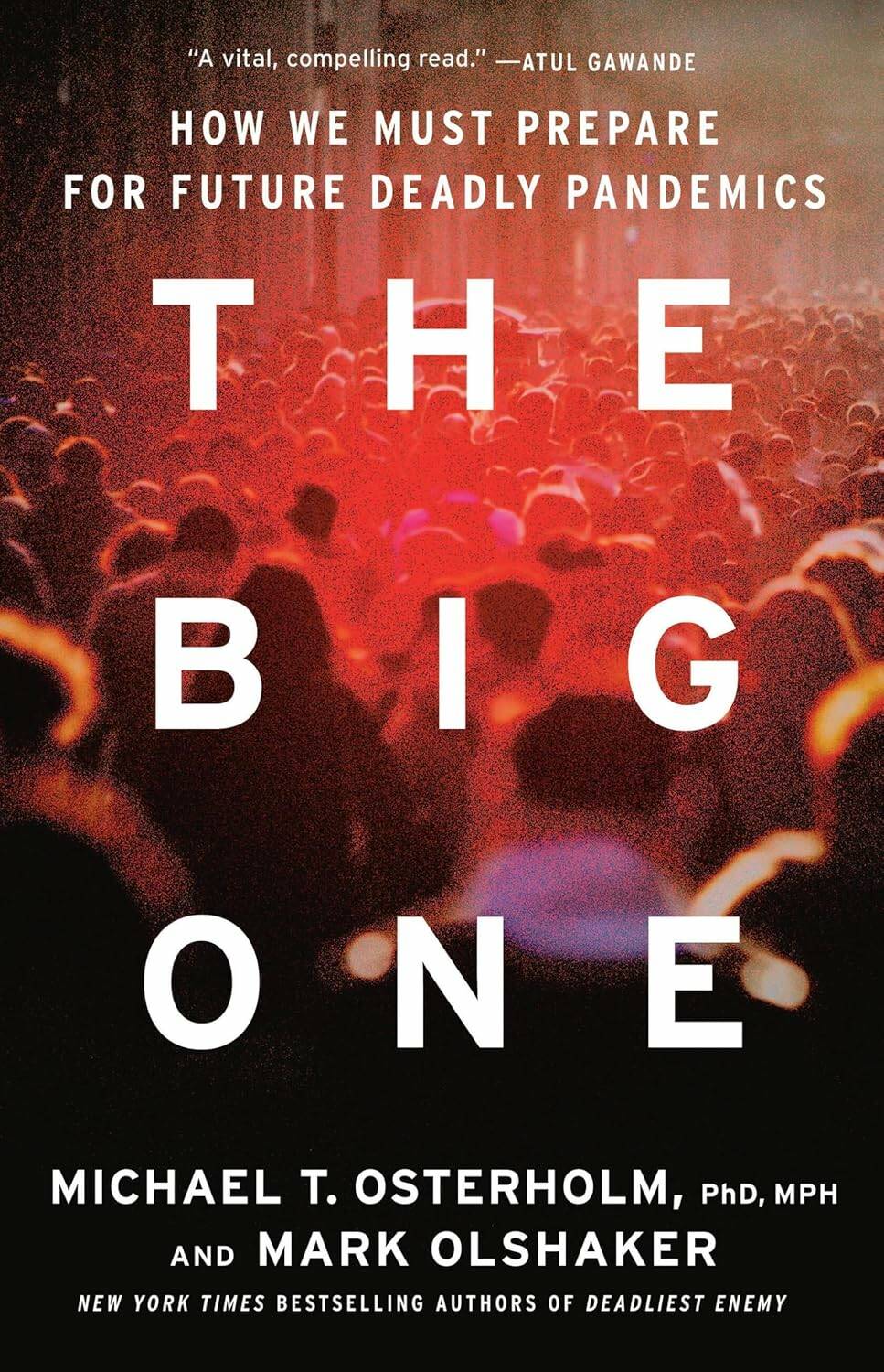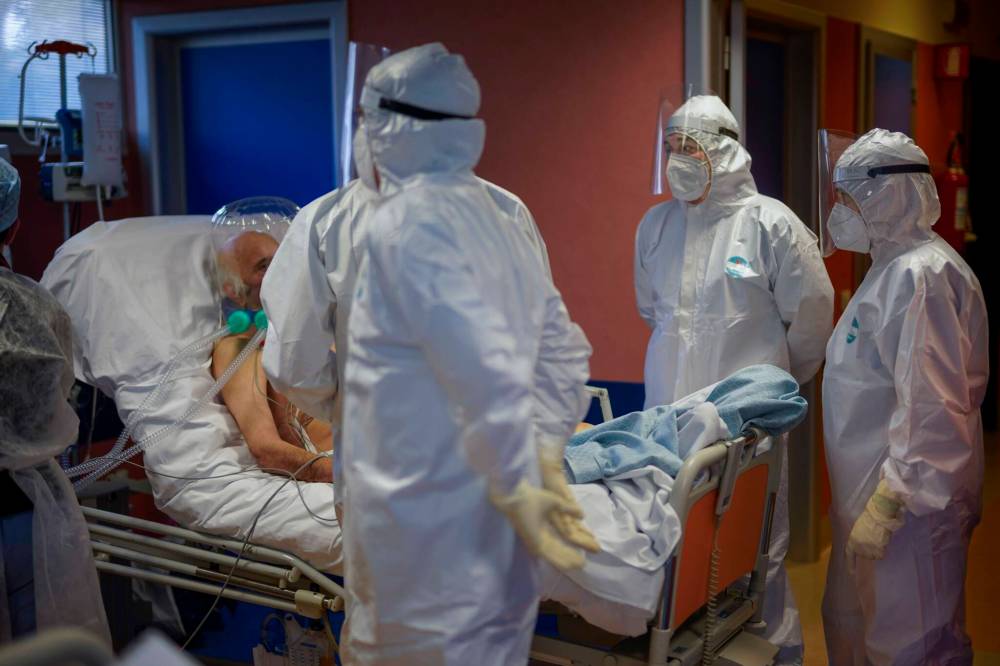Code red
Duo surmise next pandemic could be far more deadly than COVID-19
Advertisement
Read this article for free:
or
Already have an account? Log in here »
To continue reading, please subscribe:
Monthly Digital Subscription
$0 for the first 4 weeks*
- Enjoy unlimited reading on winnipegfreepress.com
- Read the E-Edition, our digital replica newspaper
- Access News Break, our award-winning app
- Play interactive puzzles
*No charge for 4 weeks then price increases to the regular rate of $19.00 plus GST every four weeks. Offer available to new and qualified returning subscribers only. Cancel any time.
Monthly Digital Subscription
$4.75/week*
- Enjoy unlimited reading on winnipegfreepress.com
- Read the E-Edition, our digital replica newspaper
- Access News Break, our award-winning app
- Play interactive puzzles
*Billed as $19 plus GST every four weeks. Cancel any time.
To continue reading, please subscribe:
Add Free Press access to your Brandon Sun subscription for only an additional
$1 for the first 4 weeks*
*Your next subscription payment will increase by $1.00 and you will be charged $16.99 plus GST for four weeks. After four weeks, your payment will increase to $23.99 plus GST every four weeks.
Read unlimited articles for free today:
or
Already have an account? Log in here »
For three years, the murmur of underlying fear lived among us, and the future seemed about as promising as palliative care.
It was our unforgettable COVID-19 pandemic, the world’s most catastrophic natural event in the past 100 years.
Authors Michael Osterholm, an estimable epidemiologist, and exceptional journalist and filmmaker Mark Olshaker, are sharing with conviction and authority what they learned from COVID-19, what we did wrong, where we’re headed and how we’ll fight back if the next pandemic were to be the deadliest ever — the so-called Big One.

Associated Press files
In this 2023 photo, patients with COVID symptoms use ventilators at the crowded Changhai Hospital in Shanghai, China.
“The Big One is not optional; it’s not an if, it’s a when,” say the authors.
First off, in this thoroughly researched and important book (a little hard going here and there, but well worth it), the authors recommend we learn to give as much weight to pandemics and research as we do national defense. In plain language, that means the authors believe that you spend millions and save billions. And they do the math to prove it.
Osterholm advises world leaders on public health awareness, and is founding director of the Center of Infectious Disease Research and Policy, University of Minnesota. He is internationally renowned.
From the early spring of 2020 to the summer of 2023, the pandemic killed over 7 million people worldwide. Who can ever forget the mass lockdowns, isolation at home, online schooling, unemployment, shuttered stores, self-doubt and masks? (The pandemic before it, the Spanish flu, killed 25-50 million people from 1918 to 1921.)
The Big One is primarily a warning to the public, a wake-up call that the next pandemic may be far more deadly than was COVID-19.
The authors don’t pick any date for the next pandemic, but cite Harvard economist Lawrence Summers: “Experts predict a 50/50 likelihood that we will see another pandemic as deadly as COVID-19 or greater over the next two decades. Given that COVID-19 has cost the global economy $12.5 trillion (and climbing), $20 billion a year or more on pandemic preparedness would be a sound investment.”
(Metabiota, a company that tracks infectious disease risk and outbreaks, predicts there is a 47 to 57 per cent chance that within the next 25 years, the world will experience another pandemic or epidemic that will kill at least as many as did COVID-19.)

The Big One
A worrisome factor in all of this is the attitude of the Trump administration. It disbanded the White House Office of Pandemic Preparedness and appointed to the position of public health czar a man emphatically opposed to vaccines, Robert F. Kennedy Jr.
(In his 2020 book, Trumpocalypse, David Frum writes that Donald Trump ignored warnings of pandemics from the very first day of his presidency. He refused to use off-the-shelf testing technology that could have saved many lives.)
“Many of the experts who are needed to respond to future pandemics have had their career paths obliterated by funding cuts in the first months of President Trump’s second tenure. The ultimate impact of these cuts is likely to be devastating,” say the authors.
The pandemic also intensified our ongoing social recession, deepening our isolation and reducing human contact more than ever, with people continuing to choose social media, Zoom, remote work and virtual reality over in-person contact.
The very worrisome news is that the last six months has seen the isolation of new coronaviruses in bats in China that have both high infectiousness and high lethality, making them so much more dangerous than COVID.
“So imagine a new pandemic where it’s as infectious as Covid was, but instead of killing 1% to 2% of the people it kills 5% to 35%. That’s exactly the example we’re talking about with the Big One,” the authors say.
It is explained (politely) that Robert Kennedy Jr. is known as a vaccine skeptic and promoter of the repeatedly debunked claim that vaccines can cause autism.

Domenico Stinellis / Associated Press files
In this 2020 photo, medical staff in Rome observe an elderly patient with COVID-19 in an intensive care unit.
“Well, the fact of the matter is today the data on all vaccine safety and efficacy is already out there, and the scientific conclusions are clear. Smallpox, the scourge of history, has been eliminated, polio has been eliminated in all but a few countries, and diphtheria largely consigned to the dustbin of history,” the authors write.
Osterholm quotes a 2024 study that says that for all children born in the U.S. between 1994 and 2023, nine vaccines prevented an estimated 1.1 million deaths, 32 million hospitalizations and 508 million cases of illness, saving US$540 billion in medical costs and US$2.7 trillion in indirect costs.
Concludes the pair: “as we have made clear, hope is not a strategy, and fear is not an excuse…. we have seen what’s coming. The choice of how we prepare for and face it is up to us.”
Barry Craig is a retired journalist.


